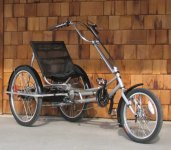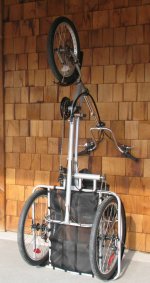John Bozi
100 kW
Chalo, 120 is now the lowest I have heard of thanks to you.
Problem is I have 4 joining holes (cant think of the bike vocab for them) as in mountian bikes these days.
the shorteners for tandems are not a way of avoiding pedal strike. They still have the same length of crank just move the holes up to make it easier to pedal.
I need ground clearance
Problem is I have 4 joining holes (cant think of the bike vocab for them) as in mountian bikes these days.
the shorteners for tandems are not a way of avoiding pedal strike. They still have the same length of crank just move the holes up to make it easier to pedal.
I need ground clearance





